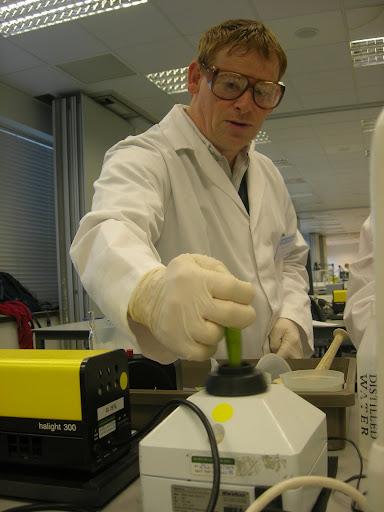Time to tackle the first TMA in this course, of which there are a number.
There are 4 questions in this TMA, each at 25%, so nice and simple.
Question 1 has a-d sub parts and is about identifying a couple of mystery elements. You are given some details about them, such as the electron shell configuration and you have to identify them. Then draw lewis diagrams of their bonding with F and Cl, including some ionised variants.
Following that, you have to use VSEPR theory to say what sort of shape the molecule would appear as in 3 dimensions. Then finally, draw the structure of the 3-d molecule using flying wedges.
Question 2 is about crystals and has parts a-g. You are given a molecular picture of pyrite, and have to measure various properties of the unit cell. This I find rather hard to pin down the unit cell, but eventually I come up with something. You then have to measure angles and interatomic distances, comment on the coordination number of the atoms, count the number of each atom in a unit cell (more tricky than it sounds as most of the atoms are shared between multiple cells). Finally, given the atomic mass of the atoms, the distances and the atom counts you are in a position to work out the density of the substance.
Question 3 - organic nomenclature - oh my!!! Two parts, firstly name 4 molecules they have drawn for you. Tricky - particularly those with rings and chains, which do you start with??
Then part two - the opposite, they give you some names, and ask you to draw them. Some of these are chiral so flying wedges are important.
Question 4 - you are given a two chiral center molecule, and have to label each chiral carbon with the appropriate R/S tag. Then give it a systematic name with thje appropriate chiral bits.
Next you have to draw an entaniomer of this molecule, and then draw a diastereomers of it.
For the last two parts you are asked to consider the optical activity of the system in various mixtures of the various molecules given and drawn.
Well done, and posted now!
skip to main |
skip to sidebar

Life studying for a 2nd time around with the Open University and others.
My Latest Blip
About Me
Topics
- A251 (7)
- astronomy (1)
- CMA (4)
- coursera (8)
- courses (40)
- degree (1)
- ECA (2)
- exam (7)
- experiment (3)
- G+C (7)
- html (1)
- intro (1)
- java (1)
- quantum mechanics (1)
- residential (43)
- S103 (19)
- S170 (1)
- S171 (1)
- S193 (1)
- S194 (4)
- S196 (1)
- S204 (21)
- s205 (18)
- S282 (17)
- s283 (8)
- S320 (12)
- S366 (11)
- S377 (10)
- SD329 (9)
- sk195 (2)
- sxr103 (3)
- SXR208 (9)
- sxr270 (7)
- sxr270tutor (7)
- SXR375 (9)
- SXR376 (8)
- TMA (49)
- tutorial (4)
- udemy (3)




No comments:
Post a Comment